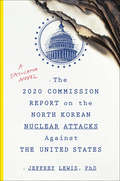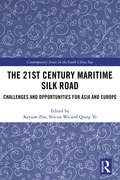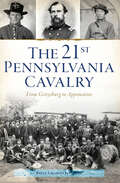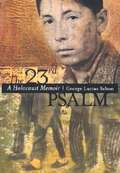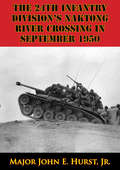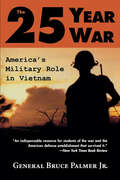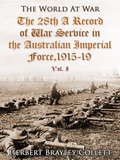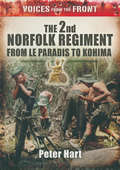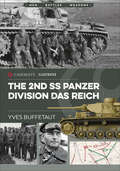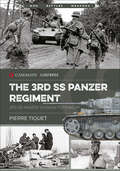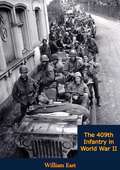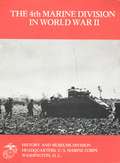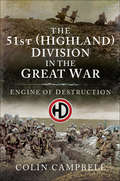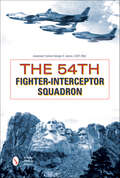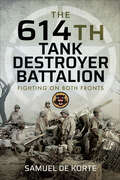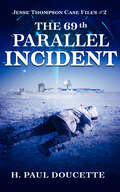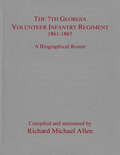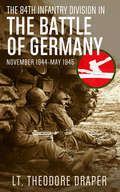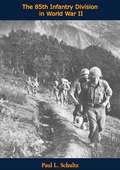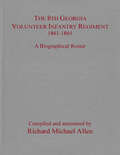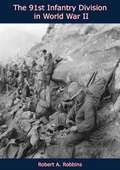- Table View
- List View
The 2008 Battle of Sadr City: Reimagining Urban Combat
by David E. Johnson Brian Shannon M. Wade MarkelIn 2008, U. S. and Iraqi forces defeated an uprising in Sadr City, a district of Baghdad with 2. 4 million residents. Coalition forces success in this battle helped consolidate the Government of Iraq s authority, contributing significantly to the attainment of contemporary U. S. operational objectives in Iraq. U. S. forces conduct of the battle illustrates a new paradigm for urban combat and indicates capabilities the Army will need in the future.
The 2020 Commission Report on the North Korean Nuclear Attacks Against the United States: A Speculative Novel
by Jeffrey LewisThis &“brilliantly conceived&” novel imagines a devastating nuclear attack on America and the official government report of the calamity (Eric Schlosser, author of Fast Food Nation and Command and Control). &“The skies over the Korean Peninsula on March 21, 2020, were clear and blue.&” So begins this sobering report by the Commission on the Nuclear Attacks against the United States, established by Congress and President Donald J. Trump to investigate the horrific events of the following three days. An independent, bipartisan panel led by nuclear expert Jeffrey Lewis, the commission was charged with finding and reporting the relevant facts, investigating how the nuclear war began, and determining whether our government was adequately prepared. Did President Trump and his advisers understand North Korean views about nuclear weapons? Did the tragic milestones of that fateful month—North Korea's accidental shoot-down of Air Busan flight 411, the retaliatory strike by South Korea, and the tweet that triggered vastly more carnage—inevitably lead to war? Or did America&’s leaders have the opportunity to avert the greatest calamity in the history of our nation? Answering these questions will not bring back the lives lost in March, 2020. It will not rebuild New York, Washington, or the other cities reduced to rubble. But at the very least, it might prevent a tragedy of this magnitude from occurring again. It is this hope that inspired The 2020 Commission Report. &“I couldn&’t put the book down, reading most of it in the course of one increasingly intense evening. If fear of nuclear war is going to keep you up at night, at least it can be a page-turner.&”—New Scientist
The 21st Century Maritime Silk Road: Challenges and Opportunities for Asia and Europe (Contemporary Issues in the South China Sea)
by Shicun Wu Keyuan Zou Qiang YeThis book explores the opportunities and challenges that both Europe and Asia face under the framework of the 21st Century Maritime Silk Road Initiative. The 21st Century Maritime Silk Road Initiative (MSR Initiative), put forward by the Chinese government together with the Silk Road Economic Belt, reflects China’s ambition and vision to shape the global economic and political order. The first step and priority under the MSR Initiative, according to documents issued by China, is to build three ‘Blue Economic Passages’ linking China with the rest of the world at sea, two of which will connect China with Europe. This initiative, however, still faces enormous challenges of geopolitical suspicion and security risks. This book seeks to assess these risks and their causes for the cooperation between the Eurasian countries under the framework of MSR and puts forward suggestions to deal with these risks in the interdisciplinary perspectives of international relations and international law. Featuring a global team of contributors, this book will be of much interest to students of Asian politics, maritime security, international law and international relations.
The 21st Pennsylvania Cavalry: From Gettysburg to Appomattox (Civil War Series)
by Britt Charles IsenbergHailing from the south-central region of the state, the 21st Pennsylvania Cavalry was forged during the Gettysburg Campaign in the third summer of the Civil War. Its charismatic officers included William H. Boyd and Oliver B. Knowles, who had honed their fighting prowess earlier in the war against fearsome Confederate tacticians John Mosby and John Imboden. The regiment's war record was dynamic and arduous, including service under Meade and Grant at Cold Harbor as infantry and making the last charge at Appomattox Court House as cavalry. After the war, veterans continued to honor their comrades, and two monuments were erected at Gettysburg to commemorate the regiment's proud service. Author Britt Charles Isenberg chronicles the gritty history of the 21st Pennsylvania Cavalry.
The 23rd Psalm: A Holocaust Memoir
by George Lucius Salton Anna Salton EisenAfter a half century, the author who now lives in Florida returned to his hometown in Poland to find that "... the wall that I have carefully built between the past and present has crumbled..." Salton (nee: Saltzman) relates surviving ten concentration camps as an adolescent and liberation by American soldiers, including Jewish ones to his astonishment.
The 24th Infantry Division’s Naktong River Crossing In September 1950
by Major John E. Hurst Jr.It is the story of the 24th Division's Naktong River crossing with which this thesis is concerned. In writing an account of the 24th Division's crossing, the historian cannot detract from the praise due the officers and men of the division who sacrificed so much in crossing the Naktong River barrier; neither can he omit the roles played by the non-divisional troops who supported the crossing. Likewise, he should not disregard the adjacent units' actions that materially assisted the 24th Division in accomplishing its mission. For these reasons, I have chosen to relate the 5th Regimental Combat Team's attack on Waegwan and the 5th Cavalry Regiment's attack to secure the Taegu-Waegwan highway. Both of these operations were vital to the 24th Division's success; the first cleared the enemy from the east bank of the river and the second secured a main supply route for the division.
The 25-Year War: America's Military Role in Vietnam
by Bruce Palmer Jr.An American army general presents an insider's history of the Vietnam War with &“a tough, dispassionate, common-sense analysis&” of what went wrong (Baltimore Sun). On April 30, 1975, Saigon and the government of South Vietnam fell to the communist regime of North Vietnam, ending twenty-five years of struggle for American military forces. This is the story of what went wrong there militarily, and why. General Bruce Palmer experienced the Vietnam War in the field and in the highest command echelons. America's most serious error, he believes, was committing its armed forces to a war in which neither political nor military goals were ever fully articulated by our civilian leaders. Our armed forces, lacking clear objectives, failed to develop an appropriate strategy, instead relinquishing the offensive to Hanoi. Yet an achievable strategy could have been devised, Palmer believes. Moreover, our South Vietnamese allies could have been bolstered by appropriate aid but were instead overwhelmed by the massive American military presence. Compounding these errors were the flawed civilian and military chains of command. The result was defeat for America and disaster for South Vietnam. &“Perhaps the best single account of the Vietnam War by a military man.&” —Baltimore Sun
The 28th: A Record Of War Service In The Australian Imperial Force, 1915-19, Vol. I, Egypt, Gallipoli, Lemnos Island, Sinai Peninsula (The World At War #1)
by Herbert Brayley CollettA comprehensive description of Australia's mounted horse troops involvement in the First World War. From the formation of the 28th brigade light horse, through to their battles overseas.
The 2nd Norfolk Regiment: From Le Paradis to Kohima (Voices from the Front)
by Peter HartThe Second World War is vanishing into the pages of history. The veterans were once all around us, but their numbers are fast diminishing. While still in their prime many recorded their memories with Peter Hart for the Imperial War Museum. As these old soldiers now fade away their voices from the front are still strong with a rare power to bring the horrors of war back to vivid life. The 2nd Norfolk Regiment were a proud old regular battalion honed in the pre-war traditions of spit and polish at their Britannia Barracks in Norwich. Sent to France they sold their lives to gain time for the retreat to Dunkirk when surrounded by an SS Division at Le Paradis in May 1940. Over 100 of the survivors would be brutally massacred. Back in England they reformed from ordinary drafts of men called up from all over the country. A new battalion was born. Sent to India they met the Japanese head on in the bloody fight for Kohima against the Imperial Japanese Army. As the fighting raged in the jungle the Norfolks were once again right at the very sharp end of modern war. This is their story.
The 2nd SS Panzer Division Das Reich (Casemate Illustrated)
by Yves BuffetautThe Das Reich Division was the most infamous units of the Waffen-SS. Hitler's Schutzstaffel (SS) units were originally paramilitary formations raised to protect the members of the Nazi party, and the Waffen-SS (the armed SS) was founded in 1934 as the SS-Verfügungstruppe. In 1939 the SS-Verfügungstruppe was placed under the operational command of the OKH. During the invasion of Poland the unit fought as a mobile infantry regiment. There were doubts about the unit's effectiveness, but Hitler ordered it be allowed to expand and form its own divisions, but under the command of the army. In 1940 the SS-Verfügungs-Division participated in the invasion of the Netherlands and France. After the Battle of France the SS-VT was officially renamed the Waffen-SS, and in 1941, the Verfügungs-Division was renamed Reich, later Das Reich.In 1941 Das Reich took part in the invasion of Yugoslavia, where its men accepted the surrender of Belgrade. In Barbarossa, Das Reich fought with Army Group Center, in the spearhead of Operation Typhoon and taking part in the battle of Moscow, by which time it had lost 60 percent of its combat strength. It was pulled off the front in mid-1942 and sent to refit as a panzer-grenadier division. Returning to the Eastern Front, Das Reich took part in the fighting around Kharkov and Kursk. Late in the year it was designated a panzer division. In 1944, the unit was stationed in southern France when the Allies landed in Normandy. The following days saw the division commit atrocities, hanging 100 local men in the town of Tulles in reprisal for German losses, and massacring 642 French civilians in Oradour-sur-Glane, allegedly in retaliation for partisan activity in the area. Later in the Normandy fighting Das Reich was encircled in the Roncey pocket by US 2nd Armored Division, losing most of their armored equipment. Das Reich surrendered in May 1945.
The 300: The Inside Story of the Missile Defenders Guarding America Against Nuclear Attack
by Daniel WasserblyMilitary and security expert Daniel Wasserbly introduces the elite unit tasked with protecting the nation from long-range weapons of mass destruction.Comprised of just three hundred soldiers, the United States Army’s 100th Missile Defense Brigade and 49th Missile Defense Battalion utilize sophisticated and cutting-edge technology to monitor the skies and seas surrounding the country and shield three hundred million Americans against any potential nuclear threat. Named for the number of Spartan warriors who defended Greece at the Battle of Thermopylae, these vigilant individuals endure rigorous, always-evolving regimens to maintain peak efficiency in the event of an actual nuclear strike.Assigned to extraordinary locations at Fort Greely, Alaska and Schriever Air Force Base, Colorado, the 300 are responsible for the highest levels of homeland security. They not only maintain a never-ending watch via radar and sensor arrays, but receive continuous training in operating advanced interceptors designed to home in on and destroy in-flight ballistic missiles. It’s a complex—and occasionally unreliable—defense system that scientists and engineers are always improving and upgrading.With unprecedented access to the highly classified strategic nerve centers of U.S. Northern Command in Cheyenne Mountain, years of research, and dozens of exclusive interviews with normally inaccessible missile crews, Wasserbly reveals the incredible true story behind the 300’s essential defense operations.
The 3rd SS Panzer Regiment: 3rd SS Panzer Division Totenkopf (Casemate Illustrated #Cis0011)
by Pierre Tiquet“A fascinating look into the experiences of the men of an elite armored unit that fought on the Eastern Front, written essentially in their own words.” —AMPSThe 3rd SS Panzer Regiment was part of the Totenkopf Division—one of the thirty-eight Waffen-SS divisions active during World War II. Notorious for its brutality, most notably a mass execution of British prisoners in the Battle of France, Totenkopf had a fearsome reputation. The 3rd SS Panzer Regiment was formed in France in late 1942, and transferred to the Eastern Front in early 1943, where it fought for the rest of the war.The regiment participated in a number of battles, and would be reduced and rebuilt a number of times. The panzers of 3rd SS Panzer Regiment fought at Kharkov, took part in Operation Citadel, fought in the battle of Krivoi Rog, and the relief of the Korsun Pocket. The regiment then retreated over the Dniester. They fought in Poland against the Russian advance, before being moved to Hungary where they participated in the attempt to relieve Budapest. They eventually surrendered in Czechoslovakia to the 11th US Armored Division.This book tells the story of the 3rd SS Panzer Regiment through the words of the veterans themselves. Among the veterans whose accounts are included are Walter Weber, a member of a tank crew in 5. Kompanie who recounts their optimism and high spirits at the start of Operation Citadel as the Germans made initial advances, followed by retreat as winter set in and the Russians began to push them back. Unterscharführer Stettner recalls the fierce tank battles and the difficulties advancing across minefields and evading an often well-concealed foe. Corporal Fritz Edelmann records the attempts to relieve Budapest in 1945 that Totenkopf took part in, which ended in encirclement, defeat and surrender to the Americans on May 9, 1945. In addition, it is illustrated with a wealth of contemporary photographs, original documents, and artifacts.
The 409th Infantry in World War II
by William East William F. Gleason Julius J. UrbanThis history was originally published in 1947 by the Infantry Journal Press. The 409th Infantry Regiment was one of three regiments in the 103rd "Cactus" Infantry division, which arrived in Southern France in Oct. 1944. They fought through the Vosges sector and later into the Rhineland area of South Central Germany. They then moved into Austria where they ended the war in May 1945.
The 4th Marine Division In World War II
by 1st Lieut. John C. ChapinThe major ground component of the active Marine Corps Reserve is the 4th Marine Division, Fleet Marine Force. The combat record of this division in World War II was exemplary; in the short space of one year it participated in four major amphibious assaults and won two presidential citations. The interest in its battle record among the reservists who now serve in its ranks has prompted the republication of this brief history, originally published in August 1945 and reprinted in 1974. This new reprint contains a brief history of the reserve 4th Division, written by Colonel Joseph B. Ruth, USMCR, a former member of the 25th Marines. Also included are copies of the division's lineage and honors, a list of its commanders, and a list of its units and their locations.The author of the 1945 history, then First Lieutenant John C. Chapin, served in the 3d Battalion, 24th Marines of the 4th Division. Assigned to the Historical Division when he recovered from wounds received in combat in Saipan, he completed this history and a similar one of the 5th Marine Division before his release from active duty.--E.H. Simmons, Brigadier General, U. S. Marine Corps (Ret.), Director of Marine Corps History and Museums
The 5 Love Languages Military Edition: The Secret to Love That Lasts
by Gary Chapman Jocelyn GreenAdvice for military couples&“As soon as I arrived in Afghanistan, I began reading The 5 Love Languages®. I had never read anything so simple yet so profound.&” — Anonymous soldierIf you are in a military relationship, you know the strain of long deployments, lonely nights, and difficult transitions. For extraordinary challenges like these, couples need specific advice.In this updated edition of The 5 Love Languages®: Military Edition, relationship expert Dr. Gary Chapman teams up with Jocelyn Green, a former military wife, to speak directly to military couples. They share the simple secret to loving each other best, including advice for how to:Build intimacy over long distancesReintegrate after deploymentUnlearn harsh military-style communicationRebuild and maintain emotional loveHelp your spouse heal from trauma and moreWith more than 20 million copies sold, The 5 Love Languages® has been strengthening millions of relationships for over 30 years. This military edition will inspire and equip you to build lasting love in your relationship, starting today. Includes stories from every branch of service, tips for expressing love when apart, and an updated FAQs section.
The 51st (Highland) Division in the Great War: Engine of Destruction
by Colin CampbellScotland provided two Territorial Force divisions at the outbreak of the First World War, in due course taking their place in the order of battle as the 51st (Highland) Division and the 52nd (Lowland) Division. 1066 and All That concluded that the war was won by the Americans, assisted by the Australians (AZTECS) and some Canadians, and 51 Highlanders. If nothing else, this ironic analysis showed that Major General George (Uncle, sometimes Daddy) Harper was a master of positive publicity and knew its value in building the Divisions image and morale. He commanded the Division from late September 1915 until shortly before the opening of the German Spring Offensive in March 1918, when he was promoted to the command of IV Corps; his name is firmly linked to the 51st.The Division arrived in France in May 1915 and took part in a limited (and unsuccessful) attack in French Flanders in June 1915, which revealed hardly surprising weaknesses in training. The next year was spent relatively quietly on the Somme and, from March 1916, the southern end of Vimy Ridge. Thereafter it fought on the Somme at High Wood and Beaumont-Hamel, at the Battle of Arras, at Third Ypres, Cambrai, faced two of the German spring offensives of 1918 and was then involved in the successful series of allied offensives that ended the war, in the Divisions case starting with an attack with the French and the Italians in the Champagne in July 1918.No history of the Division has been written since Brewshers in 1921. This book aims to cast a more objective light on its activities and to challenge its post war critics. It makes full use of official records and first hand accounts, including those provided by descendants with previously unpublished family records or illustrations. The books main purpose is to pay tribute to a generation that met hitherto unimagined horrors with fortitude, adaptability, resilience and humour and, despite the awful price in lives, broken bodies and minds, carried on until the job was done.
The 54th Fighter-Interceptor Squadron
by George A. LarsonTraces the Cold War defense of North America
The 614th Tank Destroyer Battalion: Fighting on Both Fronts
by Samuel de KorteFinalist, 2022 Army Historical Foundation Distinguished Writing AwardsThe 614th Tank Destroyer Battalion was activated on 25 July 1942 at Camp Carson, USA and, like many other tank destroyer battalions, would be sent to Europe. It saw combat in France, where a platoon earned the Distinguished Unit Citation, and later continued to fight gallantly in Germany and Austria until the war was over. However, unlike many other tank destroyer battalions that fought in the Second World War, this unit was crewed only by black soldiers. The men had been subjected to racism from their countrymen during training, although the battalion did eventually win the respect of the white soldiers they fought alongside. When the third platoon deployed their guns on the slopes near Climbach, France, they weren’t just fighting against the Germans, but also against any prejudices that their white countrymen might have had. Having earned the respect of the 103d Infantry Division, the 614th Tank Destroyer Battalion shared in their triumphs and tragedies. So when the division needed to retreat during a blizzard, or when Task Force Rhine pushed its way across the German plains, or when the division suffered heavy losses at Schillersdorf, the 614th Tank Destroyer Battalion was there with them. Included in this book are lists of medals awarded to the men during the war, as well as a list of casualties and those that served in the unit.
The 69th Parallel Incident: Jesse Thompson Case Files 2 (Jesse Thompson Case Files)
by H. Paul DoucetteLate one night, while tending to his trap-line, a native Inuit stumbles across a clandestine rendezvous not far from one of the DEW line radar sites and is subsequently shot and killed. This incident brings RCMP intelligence officer, Inspector Jesse Thompson to the north. He gradually uncovers a Soviet network involving an agent and a paid mole in the Shingle Point site.
The 7th Georgia Volunteer Infantry Regiment 1861–1865: A Biographical Roster
by Richard Michael AllenThe 7th, 8th, 9th, and 11th Georgia volunteer infantry regiments spent most of the Civil War fighting under Brig. Gen. George Thomas “Tige” Anderson in Gen. Robert E. Lee’s Army of Northern Virginia. Until now, no biographical roster of their members has ever been published. These Georgians saw it all, from the bloody battle of First Manassas through the ferocious combat of Second Manassas, Sharpsburg, Gettysburg, the Wilderness, Spotsylvania, and the long siege of Petersburg. They finally furled their banners at Appomattox. Nearly 5,000 men passed through these four Georgia regiments. These rosters offer a long overdue record of these men. Each roster is organized by company in a simple and easy to use format. Entries feature full names (if known), promotions, demotions, casualties, transfers, and resignations for every rank—an unprecedented look into men and the structure and evolution of these organizations. They include the most comprehensive examination of the personnel originally enlisted and their subsequent service histories within these units in chronological order for the first time. Compiler and author Richard Allen has spent nearly two decades researching scores of archives and other sources to prepare these rosters. He utilized primary sources such as the Official Records, Compiled Service Records, newspaper accounts, diaries, letters, census information, burial records, and a variety of documents from both published sources and private collections. Students of the Civil War, genealogists, and enthusiasts of Georgia history will find these rosters invaluable. Everyone who uses them owes Rick Allen a hearty, and heartfelt, thank you.
The 84th Infantry Division in The Battle of Germany
by Lt. Theodore DraperThe 84th Division in the Battle of Germany, November 1944 – May 1945, first published in 1946, is the account of the combat experiences of the noted “The Railsplitter Division” of the U.S. Army in the later days of World War II. Based on numerous interviews conducted immediately after each movement or encounter with the enemy, the book provides an in-depth look at the experiences of U.S. infantrymen as they moved into Germany in the face of often fierce resistance and muddy and freezing conditions. The Division fought at the Battle of the Bulge, was in the lead to cross the Roer and Rhine Rivers and the taking of the large city of Hannover, quickly followed by the successful crossing of the Elbe River. Along the way, the Division captured more than 70,000 German soldiers, liberated several concentration and internment camps, and met-up with Russian forces advancing from the east to form a critical part of the Allied victory. Included are 18 pages of maps and nearly 80 photographs and illustrations.
The 85th Infantry Division in World War II
by Paul L. SchultzThe 85th Infantry Division also known as "Custer Division", saw much service in the Second World War off of it the bitter Italian campaign in the European Theater of Operations. In this fascinating and detailed account, written by a member of the division itself, the operations, hardships and victories are recounted. Often fighting in difficulty hilly terrain, against prepared positions of great strength or defended river crossings the 85th always advanced to victory even in the most adverse circumstances.
The 8th Georgia Volunteer Infantry Regiment 1861–1865: A Biographical Roster
by Richard Michael AllenThe 7th, 8th, 9th, and 11th Georgia volunteer infantry regiments spent most of the Civil War fighting under Brig. Gen. George Thomas “Tige” Anderson in Gen. Robert E. Lee’s Army of Northern Virginia. Until now, no biographical roster of their members has ever been published. These Georgians saw it all, from the bloody battle of First Manassas through the ferocious combat of Second Manassas, Sharpsburg, Gettysburg, the Wilderness, Spotsylvania, and the long siege of Petersburg. They finally furled their banners at Appomattox. Nearly 5,000 men passed through these four Georgia regiments. These rosters offer a long overdue record of these men. Each roster is organized by company in a simple and easy to use format. Entries feature full names (if known), promotions, demotions, casualties, transfers, and resignations for every rank—an unprecedented look into men and the structure and evolution of these organizations. They include the most comprehensive examination of the personnel originally enlisted and their subsequent service histories within these units in chronological order for the first time. Compiler and author Richard Allen has spent nearly two decades researching scores of archives and other sources to prepare these rosters. He utilized primary sources such as the Official Records, Compiled Service Records, newspaper accounts, diaries, letters, census information, burial records, and a variety of documents from both published sources and private collections. Students of the Civil War, genealogists, and enthusiasts of Georgia history will find these rosters invaluable. Everyone who uses them owes Rick Allen a hearty, and heartfelt, thank you.
The 9/11 Wars
by Jason BurkeDAILY TELEGRAPH, ECONOMIST AND INDEPENDENT BOOKS OF THE YEARThroughout the 1990s a vast conflict was brewing. The storm broke on September 11th 2001. Since then much of the world has seen invasions, bombings, battles and riots. Hundreds of thousands of people have died. Jason Burke, a first-hand witness of many of the conflict's key moments, has written the definitive account of its course in his acclaimed book The 9/11 Wars.At once investigation, reportage and contemporary history, The 9/11 Wars is an essential book for understanding the dangerous and unstable twenty-first century. Whether reporting on the riots in France or the attack on Mumbai, suicide bombers in Iraq or British troops fighting in Helmand, Jason Burke tells the story of a world that changed forever when the hijacked planes flew out of the brilliant blue sky above Manhattan on September 11th.Reviews:'The best overview of the 9/11 decade so far in print' Economist'A magisterial history of the last decade ... The long patient sentences of The 9/11 Wars are suffused with the melancholy of a man who has learned a great deal from long exposure to atrocity and folly' Pankaj Mishra, Guardian'The 9/11 Wars warrants great respect' Metro'Pacy, well-researched, and packed with telling anecdotes, this book's strength is in its detailed, balanced overview ... At a time when there are more books out on terrorism than ever before ... this is likely to be among the best' Sunday Telegraph'[Burke] is one of the most respected and experienced foreign correspondents in the business ... A major authority on the politics and organisation of Islamic extremism and ... a talented writer with the rare gift of joining effortless prose to challenging scholarship ... [The 9/11 Wars] is a magnificent achievement' Irish Times'A reader wanting a more dispassionate survey of how 9/11, and the response to it, may have shaped parts of the world will do no better than invest in [this] brilliant book' David Aaronovitch, The Times'This remarkably balanced, well-sourced and very well-written book ... will be turned to in the future ... [Burke] has demonstrated impressive expertise as a historian who has had the advantage of having been present on many of the battlefields he describes' Andrew Roberts, Evening Standard'[A] lucid, sane account ... taut, careful reporting ... Remarkable' Scotsman'Potent ... journalism of a high order. Like all good reporters, Burke is something of a scholar, drawing meticulously on interview notes years old, and on extensive background reading. He excels, too, in describing the experiences of ordinary Muslims; such insights make this book essential for understanding the past decade' Sunday TimesAbout the author:Jason Burke is the South Asia correspondent for the Guardian. He has reported around the world for both the Guardian and the Observer. He is the author of two other widely praised books, both published by Penguin: Al-Qaeda and On the Road to Kandahar. He lives in New Delhi.
The 91st Infantry Division in World War II (Divisional Ser. #Vol. 49)
by Robert A. RobbinsOriginally published in 1947 by Infantry Journal Press, this is the official unit history for the 91st Infantry Division in World War II. The 91st Infantry Division arrived in North Africa, 18 April to 10 May 1944, and trained intensively at Arzew and Renan, French Morocco. Leaving by units, the entire Division was in Italy, 19 June 1944. Meanwhile, the 361st RCT landed at Anzio, 1 June, and fought near Velletri south of Rome from 3 June. The 363d RCT entered combat near Riparbella, 4 July. On 12 July, the Division fought as a unit near Chianni, Italy, for the high ground dominating the Arno River. By the 19th it had reached the river. The 363d RCT participated in the capture of Livorno, 19 July, and in a quick thrust to the north, two units entered Pisa, 24 July. From 24 July to 12 September 1944, the 91st held their positions along the Arno while they underwent extensive training. On the 13th, the Division attacked the Gothic Line, took Monticelli, 18 September, and advanced to the Santerno River through stubborn resistance, 23 September. Moving through rocky escarpments and other natural barriers as well as heavy opposition, the 91st occupied Livergnano, 13 October. The offensive was canceled, however, and the 91st assumed defensive positions below Pianoro, 31 October. During November, the 91st remained on the defensive, sending out small patrols. After resting in December, the Division returned to the line and maintained a static defensive front until 20 March 1945, when the Division retired to Gagliano and Villanova to prepare for a new offensive. This final assault began on 15 April 1945. The 91st entered Bologna, 21 April, and moved along Highway No. 64 against slight resistance. After crossing the Po River on the 23d, the Division swung to the northeast, crossing the Adige River, 26 April, and reaching. Treviso on the 29th. All enemy forces in Italy surrendered, 2 May... General Nickname: Powder River Division. Slogan: Always Ready—Print ed.

